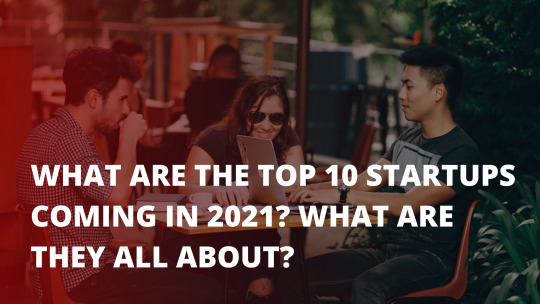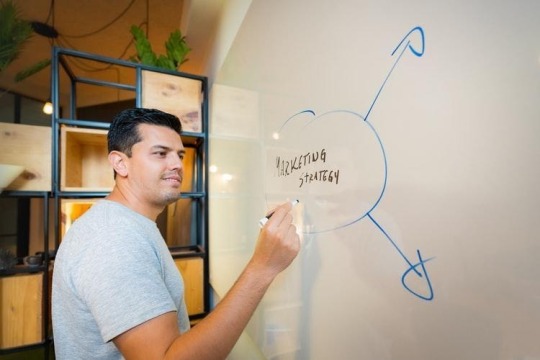#AirenTi
Explore tagged Tumblr posts
Photo

So. I drew this art for a very long time, but I hope not for nothing, since there was a lot of effort invested. On the art, my new mascot, to which I will later make a reference to the Russian platform, and, perhaps, put it on the tabler with the translation, but this is not accurate, as my text always contains errors, because of my poor English from what you you can misunderstand the essence of the character.. sorry.
50 notes
·
View notes
Text
Contextual Studies Research Project
In 1948 the City of London faced a fierce threat when Old Father Thames rose up in anger at the treatment of his River. ‘The Great Stink’ was the event that finally forced the government to take action and remedy the dire state of the Thames. Throughout ‘The Great Stink’ the recurring motif of ‘Old Father Thames’ became a powerful means of voicing the dire need for Health Reform, creating controversy and raising public awareness of the issues that was causing the deaths of thousands of citizens in the capital. (Bibby, M). The image of a dishevelled and filthy old man offering up death and disease to the citizens of London was a powerful contrast to the noble figure penned in poetic portraits of the River. It was a contrast that highlighted the juxtaposition between the importance of the river to London’s survival and the importance with which it was being treated. The character begun life as a character in Punch, but his effectiveness as a metaphor for the state of the River soon meant that he was a regular feature in numerous Victorian periodicals, and he became a powerful metaphor of the campaign against ‘The Great Stink’ (Horrocks, C 2009).
Today the Thames no longer functions as a sewage pipe, but the health of London’s central landmark is still precarious. Data from the Water Directive Framework shows that just 16% of UK water bodies were given ‘good’ ecological status in 2018 and 2019, and that the Thames is the second most polluted river in the UK, placing just after the Mersey, which is currently more polluted than the Great Pacific Garbage Patch (Morrit, D 2014, Greenpeace 2019, Schneiday, L 2021). Whilst in the 19th century the Thames served as a channel for cholera, today it serves as a transport for waste into the North Sea; in 2019 nearly 9000 items of plastic waste were discovered along the foreshore, the large majority of it was single use plastic, meanwhile ‘reefs’ of wet wipes are forming along the course of the river, impacting not only the wildlife but the course of the River itself. (McGoran, A 2019). The disregard for the health of the River showcases a greater disregard for Rivers and freshwater courses not just in London but around the UK.
Part of the problem potentially lies in the way that rivers, particularly industrial rivers like the Thames, are perceived. Rather than being part of a ‘Wilderness’ we feel we have a responsibility to protect, natural features in an industrial landscape are considered to be part of an Urban environment. (Cronon, W 1996) Throughout its history the Thames has been viewed as an important economic resource, something that often eclipses the equally important role it holds as culturally significant landmark (Pinch, P 2015). In this century there has been a push for significant water front redevelopment; stretches of the river that were abandoned as London's docklands were moved to other parts of the country became prime real estate, redeveloped into a “strip of affluence” (Sudjic, D 2003) Disregard for the environmental state of the Thames has potentially deadly consequences; in 1958 350 people were killed as a result of flooding, and the risks are only going to increase with effects of Climate Change; only 10% of UK floodplains still function, and between 2015 and 2018 1 in 5 houses were built in areas at risk of flooding (Taylor, V 2015) (Murray, J 2020). Work by groups such as the Thames Landscape Project attempts to combat this with large scale rewilding projects, but in the fight against Climate Change it is important that rivers are not forgotten in the wider public conscious.
In the battle for wider recognition of the plight of rivers like the Thames, the best weapon might be the same as the one utilised by the Victorian satirists, Old Father Thames. Stories of mythical figures like Old Father Thames have long been used as a way to warn of the power of rivers; characters like Jenny Greenteeth and water wyrms from folk tales highlight the dangers of disrespecting our Rivers (Schneiday, L 2021). There is a long standing tradition of the veneration of waterways, it is likely that Old Father Thames is a modern iteration of an old river God. The current representation of Old Father Thames resembles the Roman deities of the Tiber and the Nile, but it is likely that was a figure attached to the Thames long predating that (Ackroyd, P 2008). Artefacts found in several rivers, including the Battersea shield, suggest a different relationship with rivers in early prehistory; these artefacts are most commonly interpreted as votive offerings that were seen not as “wasting resources, but as an investment, a way of staking a claim in the natural power of the river,” (York, J 2002). Stories of the power and protection of these river deities have endured in to the present day in the form of myths like the Lady in the Lake and Excalibur (Yates, D and Bradley, R 2015). It is also possible to draw similarities between figures like Old Father Thames and the Greenman; the Greenman has remained a figure in popular culture; he serves as a powerful reminder of our connection and responsibilities to the natural world, holding humans to account for their actions, and there are still festivals held that celebrate our links to the Greenman and our links to the natural world (Anderson, W 1990). Mythical figures have also found their way into the popular conscious through the medium of science fiction. In the 21st century there has been a growing genre of Climate Fiction, or ‘Cli-Fi”, which has emerged as a alternative method of bringing ecology and environmental issues to a wider audience. The genre of science fiction allows writers to explore environmental dystopia, utopia and the potential for an ‘ecological apocalypse’ (Milner, A and Murgmann, J R 2020). Many important works of eco-criticisim have had an enduring impact, both in terms of cultural value, and on the ecological movement. One obvious example is Tolkien’s Lord of the Rings. Tolkien uses Lord of the Rings as a chance to comment on many ecological themes, Treebeard is a good example of a ‘Greenman’ esq figure; he challenges anthropocentric viewpoints and represents an alternative to the utilitarian stance presented by other characters (Brawley, C 2003). The impact of Middle Earth can be seen in the use of ‘Treebeard’ by environmental groups, one of which signed a letter with the characters name, writing in their statement “the Ents are going to war,” (Bregaland, 2006).
The enduring popularity of fictional characters showcases the effect the anthropomorphism of nature has on an audience. Anthropomorphism was first used as a term by the Greek philosopher Xenophanes to describe the similarities found in religious believers and their depiction of their Gods (Waytz, Epley, Cacioppo, 2010). Research into the phenomenon suggests that the desire to anthropomorphise the environment is a “basic human attitude” present from the early stages of childhood to allow us to empathise and interact with “non-humans as if they were human beings” (Airentu, G 2018). The ramifications of anthropomorphism on environmental debate are significant; the anthropomorphism of nature enables people to create a stronger bond with the environment, fostering a more environmentally friendly viewpoint. Pro-environmental views are tied to the feeling of environmental guilt, when nature is anthropomorphised these feelings are exacerbated, often prompting the adoption of more ecologically aware behaviours (Tam, K-P 2019). The use of terms such as ‘Mother Earth’ are good examples of using targeted anthropomorphism to encourage feelings of guilt and empathy in the public (Waytz, Epley, Cacioppo, 2010). Just as with the cartoons of Father Thames during the time of the Great Stink, the use of anthropomorphised representations of nature creates a stronger and more enduring message; for instance, a TV advert highlighting the environmental dangers of palm oil, featuring an anthropomorphised orang-utan was banned from being broadcast on the basis that it was too political (Butler, S and Sweney, M 2018).
Anthropomorphisation is clearly a useful tool in addressing the problems that stem from our increased urbanisation. The empathy for an anthropomorphic version of nature can help us to see ourselves as part of nature, as opposed to ‘the other’. (Daston, L 1995). In a world where we spend an estimated 90% of our lives indoors, it is difficult for environmental groups to rely solely on an individuals experiences in nature to promote an environmentally friendly attitude, anthropomorphism can help people bridge that gap (Tam, KP,. Lee, SL,. Chao, MM,. 2013). Some have suggested that a process of ‘Reenchantment’ is essential to promoting a healthier and more sustainable relationship with the environment; utilising the power of the ‘sublime’ in nature as a motivation to reconnect with the natural world, as well as retuning some of the ‘magic’ and ‘wonder’ to it (Barlett, P 2008). The use of quasi-mythical figures like Old Father Thames can especially help us to reconnect with overlooked areas of ‘Wilderness’ like the River Thames, by drawing on the cultural history of those myths and by using anthropomorphism to remind us of the interconnection and interdependence between us and the natural world.
Bibliography
Ackroyd, P (2008) “Thames: Sacred River”, Vintage Books, London
Airenti, G (2018) “The development of Anthropomorphism in Interaction: Intersubjectivity, Imagination and Theory of Mind”, Frontiers in Psychology
Anderson, W (1990) “Green Man: The Archetype of Our Oneness with the Earth”, HarperCollins, London
Barlett, P (2008) “Reason and Reenchantment in Cultural Change: Sustainability in Higher Education”, Anthropology, Vol. 49, No. 6, pg. 1077-1098, Chicago, USA
Bibby, M (accessed 2021) “London’s Great Stink”, History Magazine, Historic UK, (https://www.historic-uk.com/HistoryUK/HistoryofBritain/Londons-Great-Stink/)
Brawley, C (2008), “The Fading of the World: Tolkien’s ecology and loss in The Lord of the Rings”, Journal of the Fantastic in the Arts, USA
Bregaland (2006), ‘“The Ents are going to war”; Earth Liberation Front Strikes Maryland”, Earth First!, Vol. 26, No. 2, pg. 8, Daily Planet Publishing, Tuscon, United States
Butler, S and Sweney, M (2018) “Iceland’s Christmas TV advert rejected for being too political”, The Guardian, London, UK
Cronon, W (1996) ‘The Trouble with Wilderness: Or, Getting Back to the Wrong Nature”, Environmental History, Vol. 1, No. 1, pp. 7-28, Forest History Society and American Society for Environmental History, USA
Daston L, (1995) “How Nature Became the Other: Anthropocentrism in Early Modern Natural Philosophy”, Biology as Society, Society as Biology: Metaphors. Sociology of the Sciences - A Yearbook 1994 (Maasen, S., Mendelson, E,. Weingart, P,. ed.), vol. 18, Springer, Netherlands
Davis, JL,. Green, JD,. Reed, A (2009) “Interdependence with the environment: Commitment, interconnectedness and environmental behaviour”, Journal of Environmental Psychology, Vol.29, No. 2, pp. 173-180
Gleeson-White, J (2018) “It’s only natural: the push to give rivers, mountains and forests legal rights”, The Guardian, London, UK
Greenpeace, (2019) “UK river more polluted than Great Pacific Garbage Patch,” Greenpeace Press Release
Horrocks, C (2009) “Father Thames Revenge: visualising reform through the characterisation of a social problem”, Popular Narrative Media, Vol. 2, no.1, p.23, Liverpool University Press, Liverpool
Horrocks, C (2003), “The Personification of “Father Thames”: Reconsidering the Role of the Victorian Periodical Press in the “Verbal and Visual Campaign” for Public Heath Reform, Victorian Periodicals Review, Vol. 36, No. 1, p.2 -19, John Hopkins University Press
McGoran, A (2019) “Microplastic pollution and wet wipe ‘reefs’ are changing the River Thames ecosystem”, The Conversation, London
Milner, A,. Burgmann, J R,. (2020) “Science Fiction and Climate Change: A sociological Approach”, Liverpool Science Fiction Texts and Studies, Liverpool University Press, Liverpool, UK
Mishra, S K, (2016) “Ecocriticism: A Study of Environmental Issues in Literature”, BRICS Journal of Educational Research, Vol. 6, No. 4, pp. 168 - 170,
Morrit, D (2014) “Plastic in the Thames: A River Runs through it”, Marine Pollution Bulletin, Vol. 78, No. 1-2, pg. 196-200, UK
Murray, J (2020) “Rewilding Project aims to give Thames its floodplain back”, The Guardian, London, UK
Pinch, P (2015) “Waterspace Planning and the River Thames in London”, The London Journal, Vol. 40, No. 3, pg. 272-292, London, UK
Schneidau, L (2021) “Understanding the Current”, Resurgence and Ecologist, Vol. 325, pp. 34 - 36, Devon, England
Shtulman, A (2008) “Variation in the anthropomorphization of supernatural beings and its implications for cognitive theories of religion”, Journal of Experimental Psychology: Learning, Memory and Cognition, Vol. 35, no. 5, pg, 1123 - 1138
Sudjic, D (2003) “Sold Down the River”, The Observer, London UK
Tam, K-P (2019) “Anthropomorphism of Nature, Environmental Guilt and Pro-Environmental Behaviour”, Sustainability, Vol. 11, No. 19
Tam, K-P,. Lee, S-L,. Chao, MM,. (2013) “Saving Mr. Nature: Anthropomorphism enhances connectedness to and protectiveness toward nature,” Journal of Experimental Social Psychology, Vol. 49, No. 3
Taylor, V (2015) “London’s River? The Thames as a Contested Environmental Space”, The London Journal, Vol. 40, No. 3, pg. 183-195, London, UK
Urquiza-Haas, E and Kotrschal, K (2015) “The mind behind anthropomorphic thinking: attribution of mental states to other species”, Animal Behaviour, Vol. 109, pg. 167-176,
Waytz, A., Epley, N., Cacioppo, J-T, (2010) “Social Cognition Unbound: Insights into Anthropomorphism and Dehumanization”, Current directions in psychological science, Vol. 12, no. 1, pg. 58-62
Wilson, E (1993) “Biophilia and the Conservation Ethic”, The Biophilia Hypothesis, pg. 31-42, Washington, USA
Yates, D,. Bradley, R,. (2015) “Still water, hidden depths, the deposition of Bronze Age metalwork in the English Fenland”, Antiquity, Vol. 84, No. 324, Cambridge, UK
York, J (2002), “The life cycle of Bronze Age metalwork from the Thames”, Oxford Journal of Archaeology, Vol. 21, No. 1, pg. 77-92, Oxford, UK
2 notes
·
View notes
Photo

La Colonnina Enel X Fast presso il Conad di Imperia in Via Giuseppe Airenti: nessun problema sulla DC con Nissan Leaf https://www.forumelettrico.it/forum/fast-evad-imperia-conad-via-airenti-t5388.html #Imperia #EnelX #Conad
0 notes
Text
Top 10 Best Upcoming Startups Coming 2021

In this article we will discuss Top 10 Best Upcoming Startups Coming 2021. A startup is a company formed by its creators on a concept or an issue that has the potential for substantial business success and also effect. Sometimes, the initial production begins well before that, with the quest for a concept or a meaningful challenge worth solving, accompanied by the creation of a dedicated founding team associated with a common mission to carry the vision to life. The goal of the initial founder(s) is to form a dedicated co-founder team with the requisite expertise and abilities to verify the initial problem/solution match and product/market fit before scaling it to a significant organisation and self-sustaining enterprise. So, in addition to the creativity phase itself, from concept to value-generating product to business model, startups must also have a large and dedicated founding team to turn all of these into a real growing enterprise and organisation that captures the value generated as a successful company.

The enterprise tech startup market is brimming with businesses capitalising on rising demand for tools in big data, devops, cloud, mobility, the internet of things, and also safety, even as the pandemic triggers disturbances.
1. Cockroach Labs
Cockroach Labs is a software development organisation that produces industrial information management systems. CockroachDB, a cloud-native, distributed SQL database that offers "next-level accuracy, ultra-resilience, data locality, and also large scale to modern cloud apps," was created in 2015 by three ex-Google employees. Cockroach Labs' sales more than doubled in 2020 as a consequence of the COVID-19 epidemic, due in part to rapid cloud adoption. The startup anticipates similar development this year and also expects to be on target to increase its staff from 200 to 400 workers by the end of 2021. Cockroach Labs received $160 million in Series E financing on January 12, 2021. The round comes only eight months after the startup received $86.6 million in Series D financing, valuing the venture at about $2 billion.
2. Layer CI
LayerCI (backed by Y-Combinator) assists technology-forward companies in disrupting their markets. They built the world's first Continuous Staging platform, an easy-to-use and Also flexible cloud-based SaaS that offers any app developer the best CI/CD + staging experience.
3. ODAIA
ODAIA is a leader in integrating process mining, consumer path analysis, and AI to provide sales and marketing analytics as well as process automation solutions to enterprise businesses around the world. The ODAIA is based in Toronto, Canada, and was established at the University of Toronto. ODAIA is operated by a seasoned team of serial founders, data analysts, and AI developers, and it is trusted by leading global organisations. Maptual and also Multitüd, AI-powered consumer segmentation, commercial automation, and predictive analytics SaaS platforms for Pharma and eCommerce, respectively, were recently unveiled by ODAIA. Based on clear success targets, ODAIA feedback and also predictive analytics enrich consumer profiles and identify audience targeting segments.
4. AIRenty
AIRenty is a SaaS PropTech platform that uses AI to streamline the Real Estate rental phase. They render the quest activity more fun and also less time intensive for all by automating and simplifying the workflow!
5. Local logic

Local Logic is a location intelligence platform that quantifies a location's "sense of position." Local Logic provides predictive analytics to inform real estate decision making in the built world, with over 20 billion individual data points — the highest unique position data collection in the United States and also Canada. City architects and also data scientists are among the founder members of the company. The organisation integrates geospatial, user-generated, and real estate data to provide a comprehensive view of space, as well as how users interpret and appreciate it. The technology of Local Logic brings clarity to the real estate industry.
6. NorthOne
NorthOne is a mobile-first, tech-powered bank account designed for entrepreneurs, freelancers, and small/medium-sized companies, allowing them to bank, handle their money, and combine all of their financial resources in an easy and also intuitive manner. Poor financial literacy has a disproportionate effect on SMB expenses and failure rates, and NorthOne is on a quest to eradicate these issues so that company owners can concentrate on what really counts – building a profitable business. NorthOne is more than just a financial platform; it's the world-class Finance Department that SMBs can't manage.
7. Remitr
Remitr is a Toronto-based fintech company that provides a safer solution to money transfers, check payments, and also bank visits for company payments. The Remitr Global Network enables companies to send payments through Canada and to over 150 countries in a matter of days. Remitr, co-founded in 2016 by Kanchan Kumar and also Sandeep Todi, currently handles hundreds of millions of dollars every year and is funded by institutional investors.
8. PointClickCare
PointClickCare's revolutionary cloud-based platform has driven the business from startup to market pioneer, advancing the senior care sector and creating a real change in people's lives. PointClickCare, recently called one of Deloitte's fastest expanding technology companies and also one of Canada's best run businesses, offers numerous benefits and a fantastic atmosphere for workers.
9. Viafoura

Viafoura assists businesses in creating productive, civil, and committed online communities through best-in-class interaction and content moderation solutions such as real-time chats, live blogs, group talk, personalization software, and AI-powered moderation. Customers may now gain access to new and also useful insights into their target audience's habits and interests thanks to sophisticated data analytics.
10. Ruckify

Firstly, Ruckify is the world's largest peer-to-peer renting marketplace, with the aim of reducing needless consumerism and allowing customers the chance to make money from ordinary things they already own. Ruckify believes in groups that share, cooperate, and support one another whilst fostering sustainability. You can rent items from other members of the group, or you can launch your own side hustle and also list your own products for rent. Well, Ruckify partners with people, small businesses interested in rentals, and also established rental firms. To further reduce the environmental impact of consumer products, also Ruckify plants a tree with every sign-up, rental, and analysis produced in the marketplace. Recent articles - Top 10 Best Upcoming Startups Coming 2021 - The Top 10 Most Rewatched Action Movie Scenes Ever in Hollywood- Click here - The Top 10 Hardest Monsters to Kill in Movies in Hollywood- Click here - One of Top 10 movies related to 21st-century software technology you must watch- Click here - Top 10 best American Tv Series you must watch 2021 - Click here - Future Trending Tech 2021 to 2025 Next 5 Years- Click here - Top 10 Startup Ideas Entrepreneurs become Billionaires- Click here - Penny Stocks buy in 2021 - ReactJS Not Recommend Building Enterprise Applications- Click here - Famous Indian celebrities enter Tech startups- Click here - Top 6 Digital Marketing Agencies San Francisco- Click here - Top 5 Backend Programming Languages Higher Growth 2025 - Click here Read the full article
#AIRenty#CockroachLabs#LayerCI#Locallogic#NorthOne#ODAIA#PointClickCare#Remitr#Ruckify#Viafoura#Whatarethetop10startupscomingin2021
0 notes
Text
Lite per un cane a Imperia: prende a sprangate il vicino e scaraventa la moglie giù dalle scale
Lite per un cane a Imperia: prende a sprangate il vicino e scaraventa la moglie giù dalle scale
Follia questa mattina a Imperia dove un uomo di sessanta anni avrebbe preso a sprangate il vicino di casa e avrebbe ferito anche la moglie dell’uomo, scaraventata dalle scale mentre cercava di difendere il marito. L’aggressione sarebbe nata per futili motivi, sembra per via di un cane di proprietà della figlia dell’aggressore.
Un grave episodio di violenza è andato in scena lunedì mattina intorno…
View On WordPress
0 notes
Text
Red and Green(A Love Story between Tomato Juice and Celery)
“Celren, come on. Let’s go have lunch already!”
Celren Airenty was busily giving the petunias water when his female co-worker Abbie called out to him, her voice sharp and slightly annoyed. The tall brunette set down the watering can, slipped out of his apron and grabbed his sweater before exiting the shop. The sign was already turned to ‘Sorry, We’re Closed!’ since it was just the two of them working in the shop that afternoon. Abbie smiled up at him and led the way. Celren wasn’t oblivious to what she was doing. Recently, Abbie had started demanding they have lunch together and took the train together with him despite living in a different direction. But it was difficult for him to come right out and say that he wasn’t interested in her because there was someone else in his eyes.
They arrived at a small, yet well-known sandwich shop called Buns and Brunch. Celren always smiled a bit to himself whenever he saw the shop’s name. The manager was one playful person. The shop was pretty crowded but they managed to find an open table near the window. A server came rushing over a few minutes later, apologizing hastily for the wait before taking their orders. Abbie chose a turkey ham hoagie with no onions and a glass of ice water while Celren asked for a veggie burger, extra celery on the side and a sweet tea. Abbie raised an eyebrow at Celren after the server had skated away through the crowd of people.
“You really love celery, don’t you Celren?”
A bashful smile spread on Celren’s face. “I suppose you could say that.” He paused for a moment, brushing his fingers through the messy bun/ponytail that his chesnut brown curls were tied in. “Abbie, listen, there’s something I have to tell you.”
“What is it, Celren?”
“You...like me, don’t you?”
The girl smiled at him. “You could tell?”
“It was hard not to... The truth is Abbie... I-”
“Cel!”
Celren let out a gasp when an arm was flung around his neck and he was tugged to the side by a powerful force. He pouted at the black and redheaded male that grabbed him.
“Tom! I told you about being so rough! Lemme go!”
One of the more popular servers at the sandwich shop was one Tom Aloton, a charismatic guy who was particularly fond of tomato juice and grilled cheese. He also made it a personal hobby to bedger and pster Celren whenever he came to the shop. But Celren never was truly angry at the pestering. He couldn’t be because Tom was the person that had captured his heart. Abbie giggled at Tom and Celren, sparking Tom’s attention to move to her.
“You’re here with a pretty girl like that, Cel? Man, I’m so jealous!” He winked at Abbie, eliciting another giggle from her. “She’s super cute! If Cel here gives you any trouble, you let me know! I’ll straighten him out!”
Abbie laughed. “I’ll be sure to do that! Right, Celren?”
“Yeah...” Celren answered quietly, his heart aching. “Right.”
Why was it so hard for him to say what he felt? In the past, there was never a problem. Maybe it was different because this time, the person he loved was someone who shined so brightly Celren felt he’d get burned if he tried to get anywhere near him. His heart would beat a mile a minute whenever he saw Tom. Celren was a hopeless mess. After his work shift ended that evening and he experienced another awkward train ride with Abbie, he sat in his bedroom by his window where his potted flowers. His lilies were blooming nicely. He’d checked on his garden a bit earlier, overseeing the fruits and veggies he’d planted a while back. There were some that were already sprouting but nothing was fully ready to be picked. Celren sighed softly.
“I wonder what I should do...” he murmured against the flower petals. “Maybe I should write a letter or something.”
Just then, the doorbell rang out, surprising Celren. Shouting ‘I’m coming!’, he raced down the steps and hurried to open the door. His heart nearly burst into a thousand pieces and he almost fainted. Tom stood at his door with a big grin on his face and two cases of beer in his hands. “Hey Cel, let’s get drunk!”
#tomato juice x celery#my sister recommended I write this#is it good?#i don't even know xD#enjoy anyways guys
0 notes
Text
Get a Job Now
Working From Home Leads To Shocking Money Results
See how single moms and teenagers are making money from home: Click HERE
0 notes